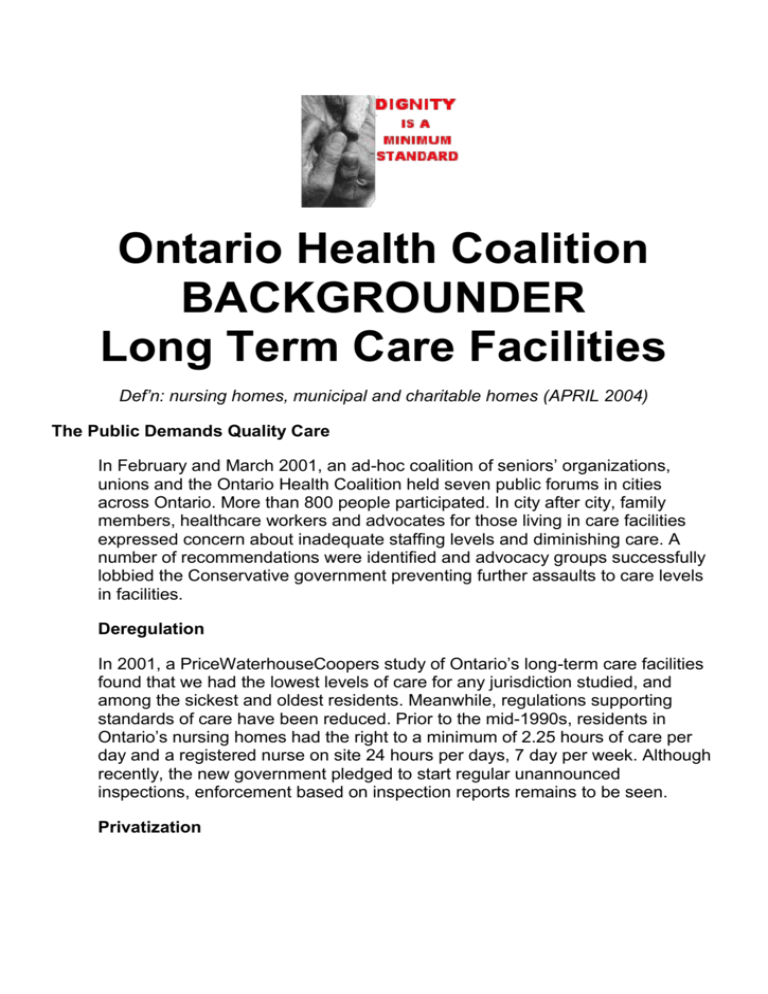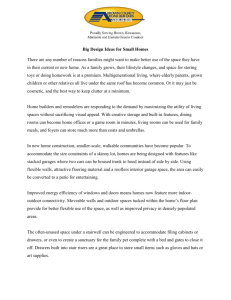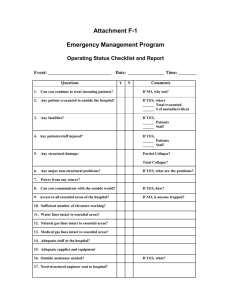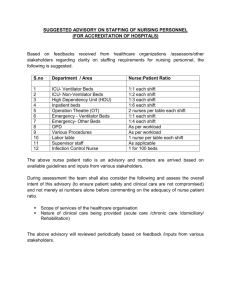fact sheet - Ontario Health Coalition
advertisement

Ontario Health Coalition BACKGROUNDER Long Term Care Facilities Def’n: nursing homes, municipal and charitable homes (APRIL 2004) The Public Demands Quality Care In February and March 2001, an ad-hoc coalition of seniors’ organizations, unions and the Ontario Health Coalition held seven public forums in cities across Ontario. More than 800 people participated. In city after city, family members, healthcare workers and advocates for those living in care facilities expressed concern about inadequate staffing levels and diminishing care. A number of recommendations were identified and advocacy groups successfully lobbied the Conservative government preventing further assaults to care levels in facilities. Deregulation In 2001, a PriceWaterhouseCoopers study of Ontario’s long-term care facilities found that we had the lowest levels of care for any jurisdiction studied, and among the sickest and oldest residents. Meanwhile, regulations supporting standards of care have been reduced. Prior to the mid-1990s, residents in Ontario’s nursing homes had the right to a minimum of 2.25 hours of care per day and a registered nurse on site 24 hours per days, 7 day per week. Although recently, the new government pledged to start regular unannounced inspections, enforcement based on inspection reports remains to be seen. Privatization Although the presence of for-profit facility owners is longstanding in Ontario, recently the balance of public and non-profit to for-profit homes has shifted in favour of the for-profits. Now, more than half of all long term care facilities in Ontario are owned and operated by for-profit enterprises, by far the highest proportion of private sector involvement in the country. In 1998, the Conservative government announced the building at public expense of 20,000 new long term care beds. Two-thirds of these beds were awarded to for-profit corporations who will own the facilities when they have been built. A significant portion of the privatized beds were awarded to 3 major for-profit corporations: Extendicare, Central Park Lodges and Leisureworld. For the first time, Ontarians are paying the private corporations and capital costs to build long term care beds that these companies will fun for profit. Increased Out-of-Pocket Costs & Two Tier Access The accommodation fees paid by residents in long term care facilities have been increasing. In addition, facility operators are now allowed to keep 50% of the surcharge for private & semi-private beds — money that used to be returned to the government. Our largest private nursing home operator, Extendicare, has recently reported record profits while campaigning for more funding. In addition, facilities have been allowed to reserve a greater percentage of beds for those who can afford to pay extra for private or semi-private rooms (called "preferred accommodation"). Now 60% of beds are held for those who can afford to pay the surcharge. Some of Our Key Concerns Clear Standards and Regulation: required minimum staffing standards to protect residents and staff, require that increased funding be tied to increased staffing and other improved levels of care. A Responsible Inspection Regime: institute regular, unannounced inspections and mandate inspectors to consult with residents, family and staff about conditions in facilities. Institute whistleblower protection for staff who complain about poor management practices. Public Accountability: institute transparency and accountability for facilities and recognize family councils. Reduce Profiteering: eliminate the increased user fees and ensure adequate access to subsidized beds and halt the conversion of municipal & charitable beds into for-profit beds. Compel for-profit operators to pay more attention to need rather than corporate greed. Allow Ontarians to critically assess the rate of profit in this sector.






